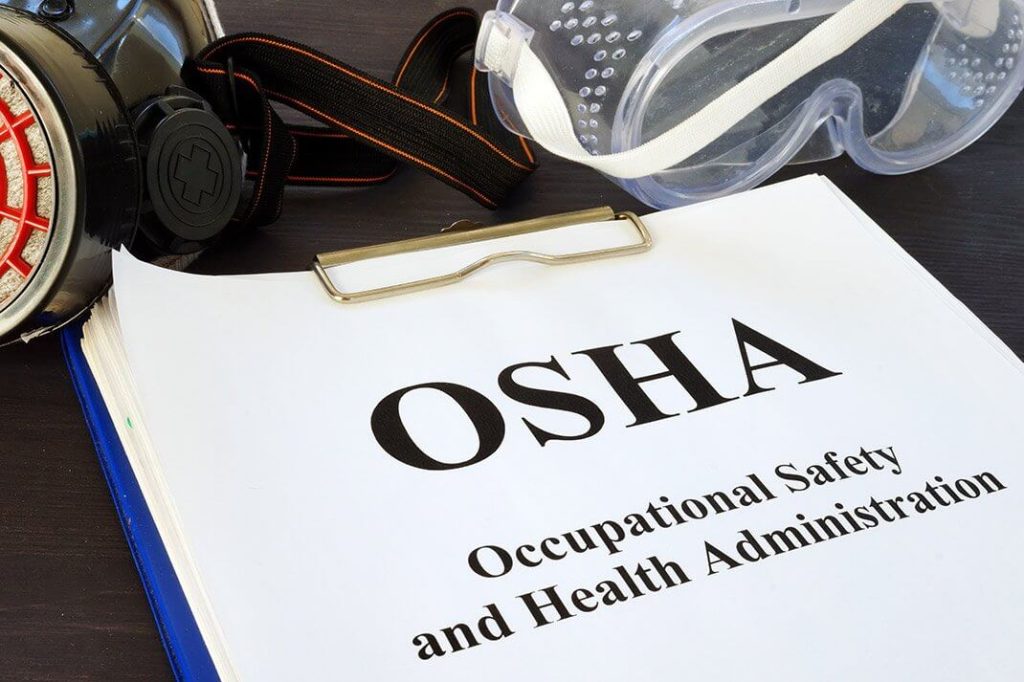The Occupational Safety and Health Administration’s (OSHA) Respiratory Protection Standard requires employers to provide respiratory protection to employees who may be exposed to hazardous airborne contaminants in the workplace. In this article, we will discuss the training requirements of the OSHA Respiratory Protection Standard (29 CFR 1910.134). We will also provide practical examples of how to ensure employees understand these requirements and meet the requirements of their respiratory protection program. In addition to this article, find more detailed information about developing a Respiratory Protection Program here.
What are the basic training requirements for respiratory protection?
Employers are required to provide “effective” training to employees who are required to use respirators. This training must be comprehensive and understandable to the worker in their language.
The training must be provided before workers are required to use respirators and it must be repeated at least annually thereafter.
The training must be provided whenever a new type of respirator is introduced into the workplace or whenever a change in the workplace or task requires a different type of respirator.
What information must be covered during respiratory protection training?
OSHA requires that employees are able to demonstrate knowledge of the following topics:
- Why the respirator is necessary and how improper fit, usage, or maintenance can compromise the protective effect of the respirator
- The limitations and capabilities on the usage of the respirator
- How to use the respirator in emergency situations, including situations in which the respirator malfunctions
- How to inspect, put on and remove, use, and check the seals of the respirator
- The proper procedures for maintenance and storage of the respirator
- How to recognize medical signs and symptoms that may limit or prevent the effective use of the respirator
Additional information important to all respiratory protection training:
- Employees should be provided detailed information about the hazard assessment (click here to find out more about hazard assessments) and the specific hazardous air contaminants to which the employee will be exposed for their specific tasks.
- This task-specific training should cover:
- The specific type of respirator required for each task, including the appropriate filters and cartridges to be used based on the hazard.
- The procedures for cleaning and maintaining respirators after each use, including procedures for removing and disposing of filters and cartridges.
How often is training required?
- Initially before being placed in a job which requires the use of respiratory protection
- Annually thereafter and when one of the following situations occur
- Changes in the workplace or the type of respirator render previous training obsolete
- For Example: A cabinet manufacturing company traditionally requires a N95 filtering facepiece respirator for protection against airborne dusts from wood and other particulates. Due to growth of the business, they install a stain and paint booth which introduces employees to a chemical airborne hazard which was not previously an issue. Employees now must wear a half face tight fitting respirator with an organic vapor cartridge. The initial training for these employees did not cover the specifics regarding this type of respirator so therefore, additional training was necessary for their employees on the specific tasks and types of respirators which must now be used.
- Inadequacies in the employee’s knowledge or use of respirators indicate that the employee did not retain information from the training
- For example: An employee is seen wearing tight-fitting respiratory protection with a full beard which interferes with the seal. This is indicative of the employee not fully understanding the fit and seal of respiratory protection and its integral part of protecting the employee.
- Any other situation which may arise in with retraining is necessary to ensure safe use of the respirator.
- For example: Employees are initially trained in January for the use of respiratory protection during the application of powder coating to metal. However, the employer did not perform any powder coating jobs until August. As it had been 8 months since the training with no respiratory protection usage during that time, retraining was necessary to ensure employees were able to use respirators safely.
- Changes in the workplace or the type of respirator render previous training obsolete
How should I provide this training to my employees?
Respiratory protection training can be delivered in a variety of ways, including classroom training, online training, and hands-on training. Hands-on training, in particular, is an effective way to ensure that workers understand the proper use and maintenance of respirators which they may use in the workplace.
Hands-on training should include:
- Demonstrating how to properly put on and take off respirators, including how to adjust the straps and tighten the respirator to ensure a proper fit.
- Demonstrating how to inspect and clean their respirators, including how to replace filters and cartridges.
- Practicing putting on and taking off respirators in a simulated workplace environment using equipment and materials that are similar to those used on the job.
It is also important to involve workers in the training process. Workers can provide valuable feedback on the fit and comfort of respirators, and they can help identify areas where additional training or resources may be needed.
Do I have to have a certification in order to provide training to employees?
As with the QLFT and QNFT fit testing protocols, there are no explicit requirements for the training of employees who provide respiratory protection training. However, it is important that the trainer understands and is competent on the basic regulatory requirements and the application of these requirements.
OSHA does state that “The employer shall designate a program administrator who is qualified by appropriate training or experience that is commensurate with the complexity of the program to administer or oversee the respiratory protection program and conduct the required evaluations of program effectiveness.”
What are the recordkeeping requirements for respiratory protection training?
The Respiratory Protection standard requires employers to establish and retain written information regarding medical evaluations, fit testing, and the respirator program.
As respiratory protection training is part of the respirator program, these training records should be documented and maintained for at least the duration of the employee’s employment and they must be made available to OSHA upon request.
Components of an effective respiratory protection training program
The training requirements of the OSHA Respiratory Protection Standard are critical in ensuring that workers are protected from the dangers of hazardous airborne contaminants in the workplace. Employers must provide comprehensive training that covers general topics such as proper use, inspection, and maintenance of respirators, as well as task-specific training that addresses the specific respiratory hazards and procedures associated with each task that requires the use of a respirator. Hands-on training, involving workers in the process, and keeping records of the training are all important components of an effective respiratory protection training program.
A crucial and required step before providing training is ensuring that employees are able to safely wear respiratory protection by conducting a medical evaluation. Vest’s Respirator Clearance system can assist your organization with completion of the Medical Evaluation Questionnaire to medically qualify employees for respirator use.
Speak with a Vest representative about respirator clearance.
OSHA Reference: https://www.osha.gov/laws-regs/regulations/standardnumber/1910/1910.134



